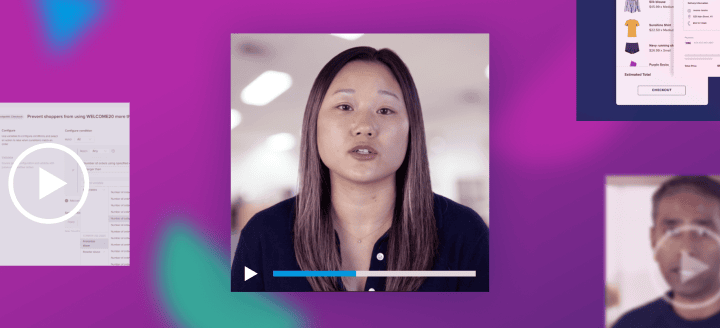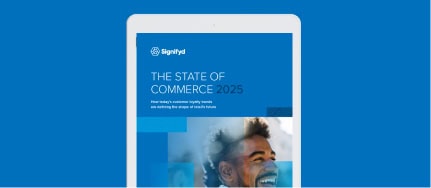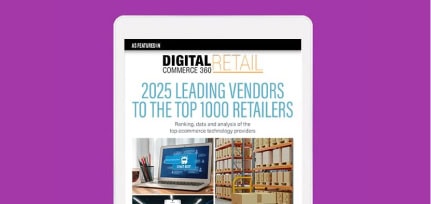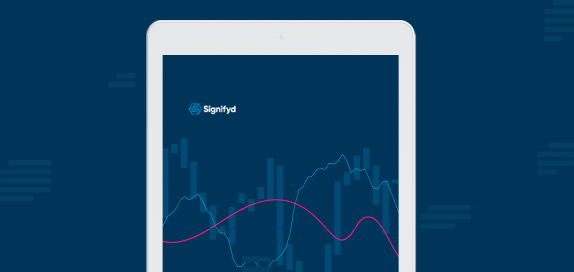With all the talk in retail about how the consumer is charge now — with unprecedented information, endless selection and choice of who to buy from — why in the world would a manufacturer or wholesaler want to expand into a direct-to-consumer selling model?
For all kinds of reasons, it turns out, according to an expert panel assembled recently for a webinar examining a key strategy for ecommerce growth.
“At the end of the day, we’re all selling something,” Jordan Brannon, president of Coalition Technologies said during the presentation. “In ecommerce, it’s often the product and the brand. Ecommerce companies that focus on the product exclusively and forget about the brand tend to have shorter life cycles or tend to see a lot more variance in their success.”
Short life cycles? Variance in success? Not good.
There was, of course, wide agreement among panelists Brannon, Dan Fertig, of BigCommerce, and Lee Hadsock, of Signifyd, that retailers don’t want to go out of business. But beyond that, how do retailers expand their business? How do they grow? The question was at the heart of the discussion in the session “The Journey from Wholesale Brand to Direct-to-Consumer Retailer.”
Don’t just sell products; Sell your brand
Take the notion of not selling just products, but of also selling your brand.
The key way to sell your brand is to be the entity that sells your products. When a brand is selling directly to customers, it creates stronger relationships with them. It also ensures that the brand is completely in charge of its message, its pricing, the way its products are presented and the entire customer experience — at least in its B-to-C sales channel.
“We really try to get our customers to focus on their brand and how they can differentiate their customer experience and their unique selling proposition in a way that really helps them narrow their competitive market,” continued Brannon, president of the digital agency specializing in web design and search engine optimization.
- Play nice: Sell some products exclusively through your retail channels to avoid becoming a threatening head-to-head competitor with your resale partners.
- Keep the human touch: Identify ways you can let consumers know there are human beings on the other side of the ecommerce transaction. Responsiveness, high-quality content and personalization all help.
- Customer experience is key: About half of site visitors have a low propensity to buy. A small percentage have a high propensity to buy. Great CX grabs the 30 to 40 percent who are waffling.
- Build trust: The average merchant wrongly declines 3 percent of orders for fear of fraud. Customers are insulted and wonder what else the merchant is getting wrong.
- Quiz yourself: Make sure you can answer the five W’s. Who are you selling to? What products will you sell B-to-C? When do you want to sell (seasonally)? Where do you want to sell (own digital and own brick-and-mortar?) Why do you want to sell directly to consumers? If you can’t pass the quiz, regroup.
Opening a direct to consumer channel also helps B-to-B sellers get to know their end customers in ways that help build loyalty. Fertig, who’s a new father, explained that he used to buy diapers and baby wipes (a lot of them) from the local drug store. But eventually he shifted to buying direct from Procter & Gamble’s digital sites.
“It’s a strategically important initiative,” he said. “It enables them to start to build a dialog directly with their end customers. And it allows them to gather really valuable information on customers just like me.”
Fertig explained that while he is benefiting by receiving promotions and high-quality child-rearing content, P&G is learning more about him — information that is highly valuable in the effort to sell him more P&G goods.
But the value of the data from direct-to-consumer sales goes far beyond marketing.
“We’re finding a lot of manufacturers, wholesalers, distributors, finding a lot of success direct-to-consumer online,” Brannon said. “And the ones who seem to do the best with that are the ones who take that information and are able to carry that into their retail strategy. So, taking some of the direct-to-consumer sales data that they have from their own sales channels and then using that to provide feedback into their B-to-B strategies.”
Manufacturers and wholesalers gain insights into what’s working and what’s not, he says. They come up with products and product tweaks to roll out.
Expanding the B-to-B-to-C business model isn’t just more of the same
Maybe it will come as no surprise that adding a business-to-consumer channel to your business-to-business model isn’t just doing more of the same with a different target market.
Ecommerce has been evolving rapidly for years and the pace is only accelerating. The lines between B-to-B and B-to-C retailers is blurring, as Brian Beck, of Guidance, recently pointed out on the Future of Customer Engagement and Commerce blog.
There are some challenges. First off, you don’t want alienate the retailers who already sell your products. You should consider a different product mix in your B-to-C line to avoid head-to-head competition with your retail channel partners.
Second, as Hadsock, a fraud prevention expert, pointed out, when you open up your online store to consumers, you will have many customers that you haven’t seen before and that you don’t know much about.
“Fraud is a major concern for merchants who are used to selling only to authenticated business buyers,” he said. “There is a much greater risk to selling to consumers when you don’t have all the data.”
Manufacturers and traditional wholesalers moving into consumer markets might not have the skills and tools to adequately protect themselves from fraud — and why would they? B-to-B customers are typically known and buy through established accounts. Consumers come to sites from anywhere at anytime.
Without some forethought, enterprises could find themselves spending hours and hours on manual reviews of orders to make sure those placing them are legitimate consumers. Those reviews squeeze already-thin margins and, just as important, it delays orders at a time when consumers are used to getting the goods fast.
“Thanks to Amazon Prime,” Hadsock said, “nobody is willing to wait anymore.”
Moving into B-to-C selling — and expanding beyond selling to authorized commercial buyers — also exacerbates the problem of false declines, or “the insult rate,” as Hadsock calls it.
When a legitimate customer’s order is cancelled for fear of fraud, it does lasting damage to the relationship between seller and customer.
“I can’t really think of a much worse customer experience than getting the buyer all the way to check out and then you don’t let them complete the purchase,” Hadsock said. “There is a 50-50 chance they’ll never come back.”
Expanding your audience can seem like a big step for a traditional manufacturer or wholesaler. And while the webinar panel didn’t reach the conclusion that it’s not as hard as it looks, it did show how it can be done.
As for why do it? The answer is Willie Horton clear: That’s where the money is.
Mike Cassidy is Signifyd’s lead storyteller. Contact him at [email protected]; follow him on Twitter at @mikecassidy.








